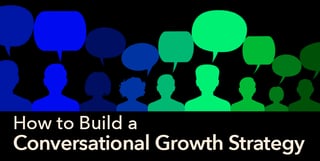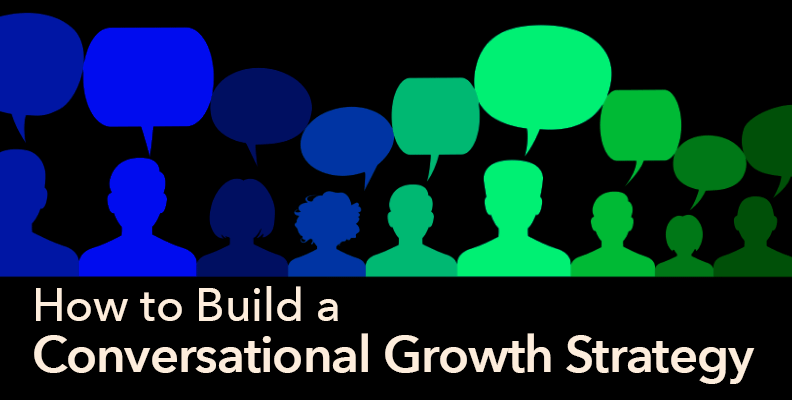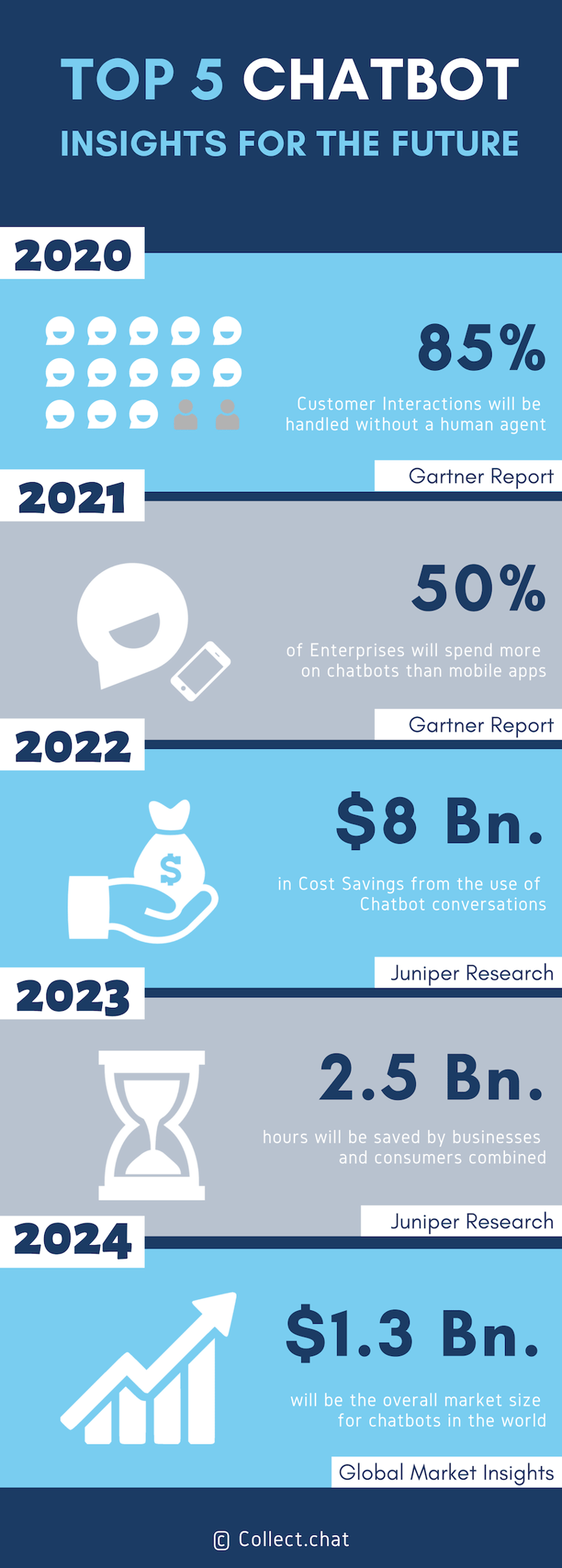

If you haven’t recognized by now, there is a shift taking place in marketing and sales. A shift as poignant as Inbound was from traditional online marketing. I’m referring to Conversational Marketing. Unless you’ve been hiding under a rock in the past few years you must have noticed more and more Chat Bots or Live Chats on websites. Yes, Conversational marketing is quickly replacing online forms, but it’s so much more. It’s quickly becoming the most potent sales driver.
As companies begin to recognize the necessity to enter the world of the Conversational Framework, they are now seeking to build a Conversational Growth Strategy. What the hell is a conversational growth strategy? Allow me to shed some light on the What, Why, and How to build a conversational growth plan.
What is a Conversational Growth Strategy?
To define this strategy, we first need to understand what conversational marketing is. This is the new marketing model that highlights the importance of real two-way communication. While Inbound Marketing changed the way companies spoke and listened to customers, Conversational Marketing builds relationships over time as they deliver the right information to the right person at the right time, which allows customers to drive the path they chose toward a purchase.
These conversations are vital to practically every business. Depending on how you leverage the conversations can impact the rate at which your company grows. Let me put this into another context. Let’s say an average live chat operator can handle five online conversations at one time. That means for every five people asking questions on your website you will need to add another live chat operator. No big deal, right?
So let's say 50 people ask questions on your live chat? That means you need 10 live chat operators. What if your site explodes and 500 people are requesting to speak to someone? Go ahead and hire 100 operators. 5,000 people? Well, you get the picture. This is not sustainable. This can quickly slow your business down, plus most of these operators are probably answering the same questions. How do you scale and maintain a conversational approach? The answer - Chatbots. The beauty of chatbots is if you know what many people are requesting, or the questions being asked, a chatbot can handle the traffic easily. It doesn’t matter if it’s 5, 50, or 5,000. This automation to repetitive conversations allows you to actually GROW your business instead of barely keeping your head above water.
Why do I Need a Conversational Growth Strategy?
The magic sauce for businesses today is to make a majority of customers feel heard, special, and unique. That's what conversational growth strategies bring... allowing for this one-to-one relationship at scale without this relationship-building process to create a bottleneck in your business. Adversely, enabling sales agents (for instance) to step into a chatbot conversation and take over with live chat brings a company's strategy to the next level. Live chat allows you to engage with your visitors, leads, and customers by educating and helping them at the right time, offering them the right value during their buying process.
Conversations, chatbots, and live chats are so important, Hubspot estimated that 90% of people expect to reach a business via live chat. Also, 44% say that live chat is THE most important thing a business can do to help their customers. (Nextiny) With numbers like that, how could you not build a conversational growth strategy?
Aside from those glaring statistics here are 5 more reasons you may want to get in the game:
- They cut down on Operational costs. Using chatbots can help you save up to 30% of the nearly $1.3 trillion to service the reported 265 billion customer requests per year.
- Chatbots empower your sales team. They will not replace humans, but help filter a customer request, saving enormous time acting as first-level support.
- They boost your brand image. Having a friendly conversation builds a great rapport with your customers across the world.
- Let’s be honest…it’s easier than developing an App. Chatbots outperform apps in just about every aspect of functionality, productivity, and cost.
- The Millennials love chatbots! Communication speed is everything to this audience. Chatbots aren’t just fast, they’re easy to use. And that hits the sweet spot for Millennials.
 https://chatbotslife.com/chatbot-2019-trends-and-stats-with-insider-reports-fb71697deee4
https://chatbotslife.com/chatbot-2019-trends-and-stats-with-insider-reports-fb71697deee4
So How do I Build a Conversational Growth Strategy?
- For starters, you may want to standardize all the information you need to deliver to your customers. If you struggle with how this is done, imagine how you may develop new employee training materials. What would they need to understand your company and your products in order to do their job? In addition to standardizing your information, you may want to create a FAQ for your business. What are the most commonly asked questions and the responses you give customers consistently?
- Your next step may need to be contextualizing this information for relevance. Put it into the proper context of a conversation. It’s helpful to think about the types of questions people ask. Here are 8 ways someone can ask you a question:
- Who: “Who do I talk to about my order?"
- What: “What is the difference between a mocha and a latte?"
- Where: “Where is the off button on my device?"
- When: “When does the store open?"
- Why: “Why do I keep getting this error message?"
- How: “How do I reset my password?"
- Which: “Which plan is right for me?"
- Yes/No: “Do you offer a refund?"
PRO TIP: If it's necessary to provide more than a sentence or two, and the channel you're working on is live chat (or a chatbot), you can provide a link to the source of the information (like a knowledge-base article or blog), or offer to send over the information via email.
- Make sure you optimize for the channel you are delivering your information so you can leverage the strengths of that channel. Email is slow, (taking on average 1-24 hours to respond) but provides a permanent record of the correspondence. A great channel for instructions, etc. Live chat, Chatbots, or Facebook Messenger (for example) are great for immediate, short messages. Here's the channel for lots of questions back and forth, and keeping the engagement at a high level.
- Here's a real differentiator... Personalization. Sure it's easy to use tokens to leverage your CRM to call out someone by their first name, with some Chat tools, you can personalize based on a myriad of information... IP Location, Company, number of visits, where they came to your site from, and much more. Give serious thought to how you can personalize your chatbot messages.
- The beauty of Conversations is the opportunity to empathize with your visitor. This shows compassion and helps put your company at the top of a prospect or customer's list. Understanding a visitor's paradigm helps make them feel heard. To help with this, try to put yourself in your customer's shoes and imagine the kind of response you would like to hear.
Building a Conversational Growth Strategy doesn't just mean your business has more conversations over time. To really see the impact of this strategy it's imperative you have BETTER conversations. A better conversation doesn't just provide your visitors the information they're looking for, rather it makes them feel good about your company and your product, making them more likely to do business with you either for the first time or repeatedly.
Your goal to connect and foster one-on-one personal relationships with your potential and existing customers can be achieved with leveraging a Conversational Growth Strategy. So, if you have not started... it's never too late.
Need help building your Conversational Growth Strategy? Contact Revenue River today!
